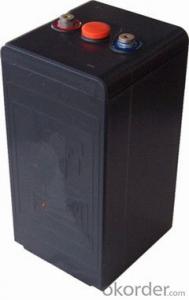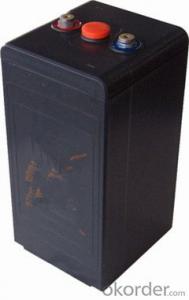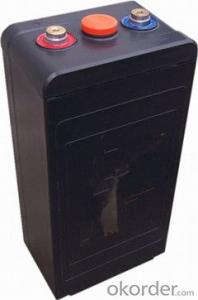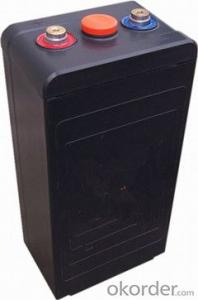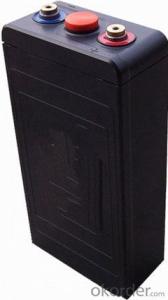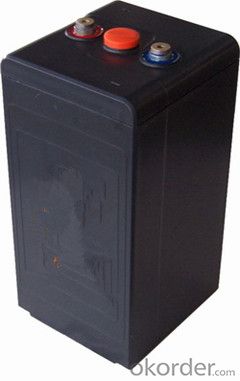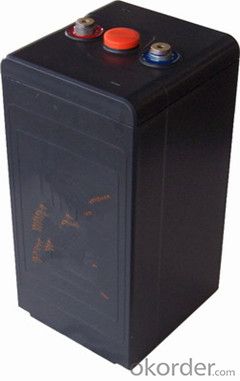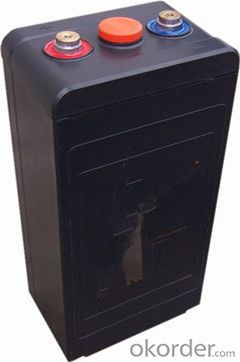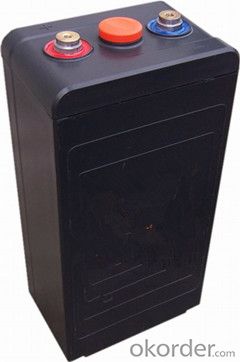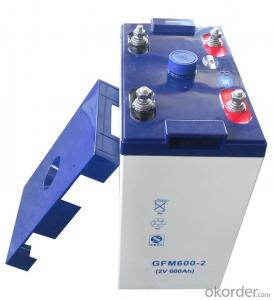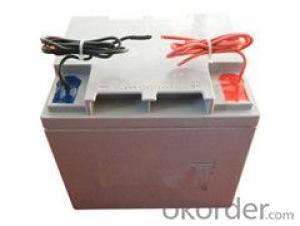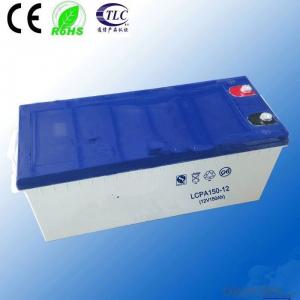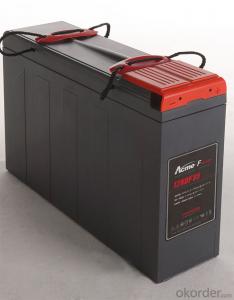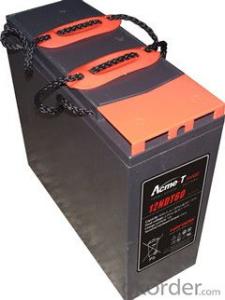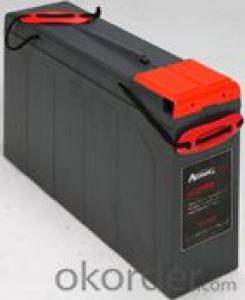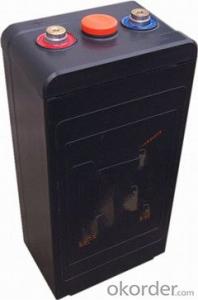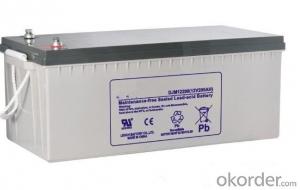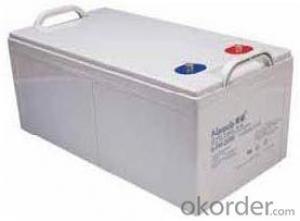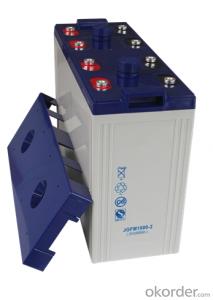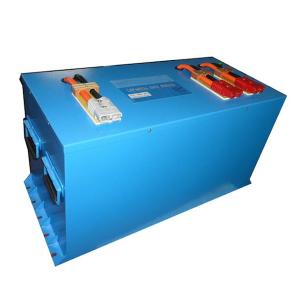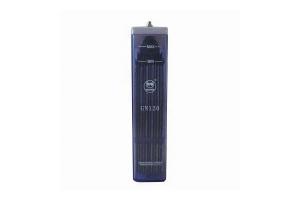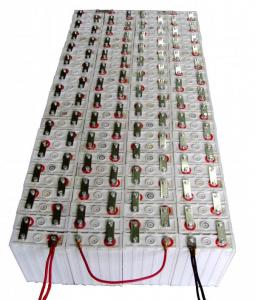AGM Battery the Eos Series Battery Eos-200
- Loading Port:
- Shanghai
- Payment Terms:
- TT OR LC
- Min Order Qty:
- 10 unit
- Supply Capability:
- 10000 unit/month
OKorder Service Pledge
OKorder Financial Service
You Might Also Like
AGM Battery the Eos Series Introduction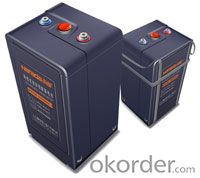
The Eos range products are designed as standby power for communication, power, military and broadcast and television system. Elegant design with high energy density, latest improved technology are adopted in this series,design life is 15+ years.
The Eos range batteries are ensured the quality with NARADA's QA system according to the ISO9001 standard.
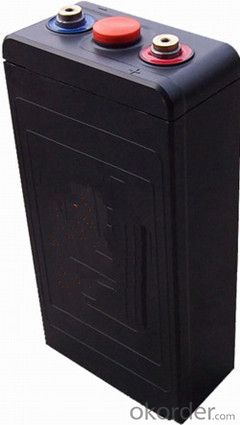
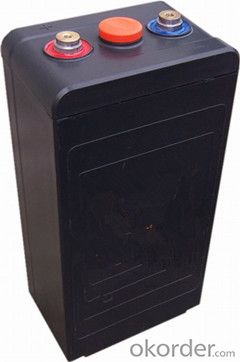
AGM Battery the Eos Series Technical Features
AGM technology is applied.
15+ years design life under floating application and cycle life is above 1200 at 80% DOD under temperature 25oC.
Reliable seal performance, no acid spillage, recombination efficiency reach 99.9%
Initial capacity above 100%, the remaining capacity above 94% after storage for 3 months (25oC)
low float charge voltage. design (2.25V/cell, 25oC), extremely consistent float charge voltage
Flexible connectors and convenient installation
Type: | Eos-200 | |
Voltage: | 2V | |
Nominal Capacity: | 200Ah(C10) | 200Ah(10 hours rate:) |
Length: | 94.5mm | |
Width: | 184.5mm | |
Height: | 360.5mm | |
Height with termial: | 372mm | |
Weight: | 13.5Kg |
AGM Battery the Eos Series Compliant Standards
IEC60896-21/22
BS6290 part 4
Telcordia SR4228
Eurobat guide
UL
Manufactured under system ISO9001(TUV)
AGM Battery the Eos Series Battery Installation Compliant with:
EN 50272-2 or local equivalents
AGM Battery the Eos Series Main Applications
Telecommunications
Uninterruptible power supply (UPS)
Other applications to provide integrated stored energy system
AGM Battery the Eos Series Products Characteristics:
Recommended float charge voltage for 2V battery: 2.25Vpc at 77oF(25oC)
Self discharge rate :< 2% per month at 77oF(25oC)
Design life: 15+ years at 77oF(25oC)
Shelf life: 6 months at 68oF(20oC)
Valve regulated system, no water addition needed
FAQ
![]() What is a AGM (Absorbed Glass Mat )Battery?
What is a AGM (Absorbed Glass Mat )Battery?
The newer type of sealed nonspillable maintenance free valve regulated battery uses "Absorbed Glass Mats", or AGM separators between the plates. This is a very fine fiber Boron-Silicate glass mat. These type of batteries have all the advantages of gelled, but can take much more abuse. These are also called "starved electrolyte.Ąą Just like the Gel batteries, the AGM Battery will not leak acid if broken.
![]() What are the advantages of the AGM battery?
What are the advantages of the AGM battery?
The advantages of AGM batteries are no maintenance, sealed against fumes, hydrogen, leakage, or non-spilling even if they are broken, and can survive most freezes. AGM batteries are "recombinant" ¨C which means the Oxygen and Hydrogen recombine inside the battery. These use gas phase transfer of oxygen to the negative plates to recombine them back into water while charging and prevent the loss of water through electrolysis. The recombining is typically 99+% efficient, so almost no water is lost. Charging voltages for most AGM batteries are the same as for a standard type battery so there is no need for special charging adjustments or problems with incompatible chargers or charge controls. Since the internal resistance is extremely low, there is almost no heating of the battery even under heavy charge and discharge currents. AGM batteries have a very low self-discharge rate (from 1% to 3% per month). So they can sit in storage for much longer periods without charging. The plates in AGM's are tightly packed and rigidly mounted, and will withstand shock and vibration better than any standard battery.
- Q: How is the capacity of the battery defined?
- 100AH capacity of the battery, fully charged after the 100A current discharge can be an hour to put the power finished. 50A current is 2 hours put away! 20A is 5 hours! Of course this is the theoretical value, in fact it is impossible to have a constant current discharge.
- Q: What is the difference between a maintenance-free battery and a conventional battery?
- As a result of maintenance-free batteries using lead-calcium alloy grille, the amount of water generated when charging less water evaporation, coupled with the shell with a sealed structure, the release of sulfuric acid gas is also very small, so it compared with the traditional battery, With no need to add any liquid, the wiring pile head, wire and body corrosion less anti-overcharge capacity, starting current, power storage time is long, by the car people welcome.
- Q: How to determine the battery is good or bad?
- Observe the battery electrolyte is turbid, turbidity that the battery positive plate softening. Observe the bottom of the battery whether there is sediment, if the plate off the battery capacity has been inadequate. Hand hit the battery two electrode piles If you hear an empty voice that pole pile and plate break. With a thick wire short-circuit positive and negative pile observation of the battery filling holes, such as the discovery of a bubble appears that the interval has been damaged.
- Q: What are the advantages of maintenance-free batteries?
- Maintenance-free battery because of its normal charging voltage, the electrolyte only produce a small amount of gas, so throughout the use of the need for the addition of distilled water, in the normal charging system, do not need to remove the charge from the removal. But in the maintenance of the proportion of its electrolyte should be checked.
- Q: What is the meaning of the battery above 12v65Ah?
- 12V is said to be the voltage, 65Ah is the current. (A is the unit of current. H is the time unit .1 hours.)
- Q: How should the battery be well maintained?
- Electrolyte density This is to evaluate whether the battery charge is normal, whether the aging of the important parameters, the use of density meter or electrolyte density tester can be measured. If the electrolyte density is too small, you need to charge. And the electrolyte concentration is too thick or too thin to a certain extent, it means that such as the occurrence of plate vulcanization, short circuit or overcharge phenomenon, this time on the need for maintenance.
- Q: The role of the battery?
- It filled with lead plate filled with sponge lead as a negative electrode, filled with lead dioxide lead dioxide as a positive electrode, and with 22 to 28% dilute sulfuric acid as electrolyte. In the charge, the electrical energy into chemical energy, the discharge of chemical energy and into electrical energy.
- Q: What kind of battery is divided into?
- At present, we used the car battery is divided into three categories, namely, ordinary batteries, dry batteries and maintenance-free batteries three.
- Q: What is a maintenanceable battery?
- It also has a shock, high temperature, small size, self-discharge characteristics. Life is generally twice the ordinary battery.
- Q: Lead-acid battery how to maintain?
- Open the rubber cap, exposing the exhaust raft, you can see the battery inside, some of the battery exhaust cutting can be unscrewed.
Send your message to us
AGM Battery the Eos Series Battery Eos-200
- Loading Port:
- Shanghai
- Payment Terms:
- TT OR LC
- Min Order Qty:
- 10 unit
- Supply Capability:
- 10000 unit/month
OKorder Service Pledge
OKorder Financial Service
Similar products
Hot products
Hot Searches
Related keywords
